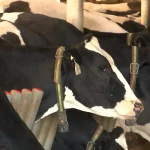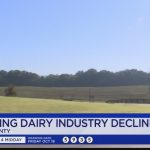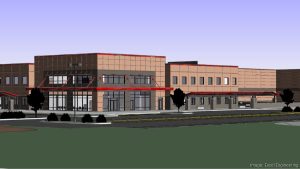
Sometimes, while trying to hold a milker on a heifer intent on kicking it off or struggling to get a difficult dry cow into a trailer, I wondered – in all the sweat and anger and cussing – how we got to this moment.
The literal answer (although I wouldn’t have appreciated it right then) is that it was 10,500 years in the making. It was then, on the other side of the earth, that someone thought it was a good idea to keep a few cattle.
Wild cattle, or aurochs, roamed most of the planet for millennia until their extinction in the 17th century. With the bulls reaching 6 feet at their withers, they were one of the largest herbivores of their time and had horns 2-and-a-half-feet long. They were hunted by humans until a civilization in the Fertile Crescent thought it would be easier to raise them instead. Genetic analysis suggests that all domesticated cattle may trace back to 80 aurochs captured in what is now the modern-day Middle East.
It’s worth applying a little imagination to appreciate the task the first cattle farmers had in front of them. The auroch was nothing like the Holstein or Jersey in our parlors today. It was not only enormous but aggressive, and people 10,500 years ago would have had only simple tools to construct fencing or move the aurochs with. Those farmers began the long work of selectively breeding for docility until they created an animal they could manage. Even the act of capturing the 80 head must have taken ingenuity and bravery. Although I am not an anthropological expert, I would be surprised if people didn’t die in the process.
As much risk must have been involved in the first domestication of the auroch, the reward was also large. The ability to farm allowed humans to settle in one place rather than continually searching out resources in a nomadic lifestyle. Cattle provided the muscle to plant more crops, which ultimately led to larger communities. Perhaps even more important, they supplied meat and blood for food (and later milk), their hide for clothing and their bones and horns for tools. As a physical embodiment of resources, cattle eventually became a source of wealth. Before long, they were used in marriage endowments, rituals, sacrifices and as a mark of who was more powerful in a community.
Although Bos taurus, the cattle in Europe and America (also called taurine or “humpless” cattle) trace back to the Fertile Crescent, it wasn’t the only “domestication event” of the wild herbivore. Approximately 7,000 years ago, near modern-day Pakistan, the Bos indicus also arose from the auroch. These indicine or “humped” cattle are presently farmed in Asia and Africa, such as zebu cattle. The indicine cattle are particularly useful in arid climates, being more tolerant toward heat. Some scholars believe a third domestication event occurred in Africa 6,500 years ago, but researchers are ultimately split on whether a distinct species evolved from this region or if it was a variation of Bos taurus.
Needless to say, the cow was advantageous for not only its muscle and meat but also the milk it provided. However, it would be another 5,000 years before fluid milk was consumed regularly. Those in the Neolithic era did not have the ability to digest milk as adults, as to do so requires a genetic mutation that produces the enzyme lactase. Additionally, the hot climate in the Fertile Crescent made it difficult to store milk. As a result, it was turned into cheeses, yogurt and butter, where it could be digested as well as kept longer. It wasn’t until migrating farmers from the Fertile Crescent brought their dairy farming practices to an indigenous group near Lake Balaton in modern-day Hungary that dairy farming truly took off. This European community happened to have a large percentage of the lactase mutation, allowing them to drink milk, a trait that was genetically selected for and spread across Europe. This made the domesticated cow even more important as a food source.
It is well known that the domestication of the cow, as well as crops and other animals, helped the Fertile Crescent develop culturally and technologically into “the cradle of civilization.” However, it is worth considering how cattle have affected human history since then. As Eric Chaline, author of Fifty Animals that Changed the Course of Human History, concludes: “If you could magically make the cow disappear and surgically remove it from history, today’s world would be a very different place – the diet, clothing, religious beliefs and lifestyles of billions of people would be unrecognizable.” Just as humans developed the cow, so has the cow helped us develop.
As dangerous and risky as it was, what the first herd of cattle put into motion was impressive.
You can now read the most important #news on #eDairyNews #Whatsapp channels!!!
🇺🇸 eDairy News INGLÊS: https://whatsapp.com/channel/0029VaKsjzGDTkJyIN6hcP1K























